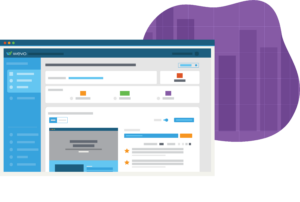User testing vs. usability testing — the two terms sound alike, but is there a difference between them? Even industry experts often confuse these phrases or use them interchangeably, which doesn’t help make things any clearer.
However, there are a number of subtle but important distinctions between usability testing vs. user testing. In this article, we’ll discuss the differences between user testing and usability testing, as well as the scenarios in which you should use both options.
What is user testing?
User testing seeks to evaluate the need for a given product or feature by understanding how your target audience uses it and feels about it. Despite the name, user testing has little to do with the user experience (UX). Instead, user testing aims to determine whether your target users actually have a need for the product and would be willing to use it.
The practice of user testing is closely related to user research. With user testing methods such as focus groups and surveys, you can get a better sense of your audience’s pain points, desires, behaviors, and more. You can then determine whether your idea solves a problem for a given test user, and whether there is enough of a user base for the concept.
When is user testing used?
When you are planning to introduce a new solution or feature, user testing can be applied at any stage in the design process. User testing is usually leveraged during the following phases:
- Early prototypes: User testing can be a quick way to see whether a prototype or MVP (minimum viable product) would gain traction among your target audience.
- Product launch: Before a new product goes to market, user acceptance testing ensures that it is usable by real people in real-world scenarios.
- Later improvements: When developing new features or functionality, user testing verifies that the time spent on this work is worthwhile.
What is usability testing?
As the name suggests, usability testing is intended to test usability of a given product. This refers to everything from understanding the product instructions to successfully navigating the interface of a website app. You can think of the term “usability testing” as falling under the umbrella of quality assurance (QA), ensuring that you have a working and user-friendly product.
In terms of the question of usability testing vs. user experience, usability testing seeks to improve the user experience by making it easier for your audience to accomplish their goals with your product.
Usability testing also intersects with UX design. For example, if your website has a large call to action in a modal window, it may be distracting users and interfering with their ability to effectively use the site.
Keep Reading: What is user experience research?
When is usability testing used?
Conducting usability tests will heavily depend on the type of testing you want to perform. One important distinction in usability studies is unmoderated vs. moderated testing:
- In moderated testing, a moderator is present to interact with and guide users as they attempt to complete a list of tasks. This enables you to get real-time feedback and ask specific, detailed questions about the user’s experience.
- In unmoderated testing, users are left to their own devices, interacting with the product on their own terms. This kind of testing is more authentic in terms of how real users would experience your product.
User testing vs. usability testing: what’s the difference?
Now that we’ve defined both concepts, the most important differences between user testing and usability testing typically involve:
- The objective: User testing seeks to verify that users need and want your product. Usability testing ensures that users can effectively use the product to accomplish tasks.
- The subject of testing: User testing may test product and feature ideas but also logos, branding, advertisements, and more. Usability testing focuses on a single product or service.
- The target users: User testing may target a broad range of people to find your target audience. Usability testing typically already has a target audience in mind.
- The testing methods: User testing involves methods such as focus groups, interviews, and A/B testing to get a sense for large-scale user preferences. Usability testing may involve moderated and unmoderated tests, as well as eye tracking or heatmaps to understand where users direct their attention while using your product.
Keep Reading: What does democratized knowledge mean?
How do you know which one is right for you?
Whether user testing or usability testing is right for you depends on your objective and what you’re testing (for example, ideas vs. products), as well as your target users and testing methods. Becoming familiar with the difference between user research and usability testing can help you choose the right testing methods for a specific case.
How to get started with user testing and usability testing
Here at WEVO, we’ve developed an extensive research platform that makes it possible to tap into truly valuable insights regarding your website’s user experience. As a result, you can create an online journey that improves trust and drives revenue growth.
Want to learn how WEVO’s next-gen user research platform can do this? Get in touch with our team today. We’d love to talk.



